The Kumbh Mela is the largest public gathering in the world. This congregation includes Sadhus, Sadhvis, Kalpvasis Ascetics, Saints, and Pilgrims from different parts of the world. This religious gathering is held at these four sacred places: Prayagraj, Haridwar, Nashik, and Ujjain once every three years. Prayagraj is hailed to be one of the most important sites for Kumbh Mela because of its link to the Triveni Sangam. Millions of devotees attend the Prayagraj Kumbh Mela which is held once every twelve years. In 2025, Prayagraj will host the next Kumbh Mela giving you a chance for spiritual renewal. The Prayagraj Kumbh Mela also includes a vibrant show of cultural activities, religious ceremonies, and speeches by saints. From the Naga Sadhus’ majestic processions to the Ganga Aarti, the Prayagraj Kumbh Mela offers tons of unique experiences that reflect the diverse spiritual heritage of India.
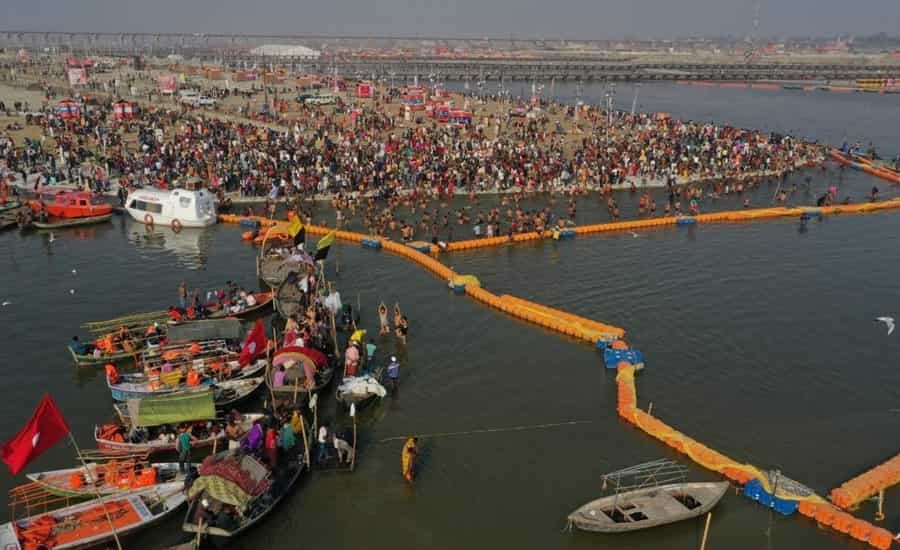
Timing and Dates
The Prayagraj Kumbh Mela is one of the grandest religious events, deeply rooted in lunar and astrological calculations. The dates of the festival are determined by the sun, Jupiter, and moon’s position in the zodiac. The auspicious time for bathing and rituals is dictated by celestial alignment, ensuring maximum spiritual benefits are received by devotees.
Significance and History
The Kumbh Mela has its roots in ancient Hindu mythology and over centuries it has evolved to become a symbol of cultural unity, faith, and spirituality. The origins of the festival are linked to the Samudra Manthan legend which involves the churning of the milk ocean.
As per the legend, the demons (asuras) and Gods agreed to churn the ocean of milk to get Amrit which is also known as the nectar of immortality. They used Mount Mandara as a churning rod and Vasuki, the serpent as a churning rope for the monumental task. When they finally got their hand on the pot of Amrit, a fierce battle ensued between the demons and gods to claim it. A few drops of Amrit fell into the ground during this struggle at four places on earth: Ujjain, Nashik, Prayagraj, and Haridwar. These locations later became the sites where the Kumbh Mela was held.
The festival’s earliest records date back to the seventh century when Xuanzang (Hiuen Tsang), a Chinese traveler documented his Prayagraj Kumbh Mela visit during the reign of King Harsha suggesting that for over a millennium, Kumbh Mela has been one of the most significant events.
The prominence of Kumbh Mela has increased over the years, attracting devotees from across the world and India. The festival is considered to be a melting pot of diverse philosophies, traditions, and religious practices. It is a place where devotees, sadhus, and ascetics assemble to seek spiritual knowledge, renew their faith, and engage in religious rituals.
Best Times to Attend Prayagraj Kumbh Mela for First-Timers
If you’re a first-timer, you should plan your trip to Prayagraj Kumbh Mela around the main bathing days as it offers an intense and unique experience of spiritual fervor of Kumbh Mela. However, the largest crowds are encountered during these days, which can be a bit overwhelming. Let’s take a look at a few tips for timing your visit:
- Midweek Visits: You will encounter fewer visitors during weekdays in comparison to weekends. You should plan your visit during the week’s middle as it helps you avoid the peak crowds.
- Early Stages of the Festival: For a relaxed experience you should plan your visit during the Kumbh Mela’s early stage. During this time you will encounter fewer crowds, allowing for better opportunities for the festival grounds exploration and easier navigation.
- Between Main Bathing Days: For a less crowded experience, you can visit between the major bathing days as it allows you to soak in Kumbh Mela’s vibrant atmosphere without the Shahi Snan days’ intense rush.
Bathing Dates
For the Prayag Kumbh Mela 2025, the bathing dates are as follows:
- Makar Sankranti (Shahi Snan): 14 January 2025
- Paush Purnima: 13 January 2025
- Mauni Amavasya (Shahi Snan): 29 January 2025
- Achla Saptami: 4 February 2025
- Maha Shivratri: 26 February 2025
- Basant Panchami (Shahi Snan): 3 February 2025
- Maghi Poornima: 12 February 2025
Getting There
- By Air: Allahabad Airport (IXD) is the nearest airport to Prayagraj situated at a distance of around 12 kilometers from the city center. The airport is linked to major Indian cities, such as Kolkata, Bangalore, Delhi, and Mumbai, through various transportation networks.
- By Rail: The major railway station in Prayagraj is the Prayagraj Junction which from different parts of the country offers regular train services. It has good connectivity to cities such as Kolkata, Delhi, Mumbai and Lucknow.
- By Road: Prayagraj is well connected via the National Highway to main Indian cities such as Varanasi, Lucknow, and Delhi. Both private and government-run buses operate to Prayagraj. State transport corporations and private operators run non-AC and AC buses to Prayagraj from cities such as Lucknow, Kanpur, Delhi, and Varanasi.
Road Routes from Major Indian Cities
- Lucknow to Prayagraj: Approximately 200 km via NH30 (4-5 hours drive)
- Delhi to Prayagraj: Approximately 700 km via NH19 (around 10-11 hours drive)
- Kanpur to Prayagraj: Around 200 km (approximately 4-5 hours drive)
- Varanasi to Prayagraj: Around 120 km via NH19 (approximately 3 hours drive)
Accommodation
- Hotels: Prayagraj is dotted with many hotels where you can have a luxurious stay experience. Whether you’re on a budget or looking to enjoy the best amenities and services you will find a hotel fitting your budget and preferences.
- Tents: Many ashrams and organizations set up tented accommodations that offer different levels of amenities and comfort.
Activities
- Processions and Parades: During the Kumbh Mela, many interesting ceremonies take place such as the procession of Akharas on horses, elephant backs, and chariots. The rituals of Naga Sadhus and shining swords during ‘Shahi Snan’, and other activities attract millions of pilgrims.
- Cultural Performances: You can enjoy music and dance performances that represent Indian tradition.
- Satsangs: You can attend Satsangs and listen to spiritual discourses to strengthen your connection with God.
- Holy Snan: Take a dip in the sacred waters to absolve yourself of your sins and attain salvation. The Royal Bathing Day or Shahi Snan is the Kumbh Mela’s most significant event.
Important Tips
- On main bathing days and during early mornings bathing ghats are very crowded. To avoid large crowds you should avoid visiting the Kumbh Mela site during off-peak hours.
- On your phone, save emergency contact numbers, including medical services, local police, and your accommodation provider. You’re also advised to carry a physical copy.
- Keep yourself updated with advisories and important announcements from the event organizers. Information is displayed on electronic boards and broadcast via loudspeakers.
- Keep all your belongings safe and secure. You can use a secure bag or a money belt to carry your valuables. In crowded areas, you should be mindful of pickpockets.
- Upon arrival locate the nearest medical stations. Seek immediate assistance in case of any health issues.
- Drink plenty of fluids and carry a reusable water bottle to stay hydrated. Carry some snacks like nuts and energy bars to maintain your energy levels.
- Follow all the guidelines and local customs, especially when you take part in religious ceremonies. Be respectful of all the traditions and dress modestly.
- Download Kumbh Mela’s official app, which offers emergency contact information, maps, and event schedules. These apps provide real-time updates.
- Stay close to the grounds of Kumbh Mela to save you travel time and have fuss-free access to bathing ghats and major events. However, on these sites, accommodations fill up quickly, so you should make the booking earlier.
- Local homestays and guesthouses offer a more homely and personalized environment. They are ideal for those who want to experience local hospitality. You can stay at Prayag Kumbh Cottages for a personalized stay experience.
Local Transportation in Prayagraj
- Cabs and Taxis: Ride-hailing services such as Uber and Ola operate in Prayagraj, offering comfort and convenience. You can also opt for local taxis. Ensure they agree on a fare or use meters beforehand.
- Auto-Rickshaws and Cycle Rickshaws: They are available widely and are ideal for short-distance commutes. Before starting the journey, negotiate fares as they often vary depending on the demand.
- Public Buses: The state transport corporation runs local buses providing affordable travel options. However, during the Kumbh Mela, they may be crowded.
- E-Rickshaws: An economical and eco-friendly transport mode for short distances. They are quite useful for navigating through crowded areas.
Packing Essentials
Clothing
- Pack comfortable and light clothing depending on the weather condition. Layers are ideal as they can help you deal with varying temperatures. Dress moderately to respect religious sentiments and local customs. Carry a poncho or waterproof jacket in case of unexpected rain.
Footwear
- Durable and comfortable walking shoes are a must, as you will have to walk a lot. Wear sandals or flip-flops for bathing and around the campsite wear casual wear.
Personal Items
- You should carry personal hygiene products, such as hand sanitizer, biodegradable soap, and wet wipes. To stay hydrated carry a reusable water bottle. You should also carry essentials such as sunscreen, sunglasses, and a hat to stay protected against the sun.
Spiritual Items
- If you follow any spiritual practice, bring items like meditation mats, prayer beads, and religious texts.
Electronics
- A power bank or portable charger for your electronic devices. A headlamp or flashlight for navigating in the dark.
FAQs
Q-1: Where is Kumbh Mela celebrated?
Ans: Kumbh Mela is held at four sacred places: Prayagraj, Haridwar, Nashik, and Ujjain once every three years.
Q-2: Where will the Kumbh Mela be held in 2025?
Ans: Kumbh Mela will be held in 2025 in Prayagraj.
Q-3: How is the timing of the Kumbh Mela determined?
Ans: The dates of Kumbh Mela are determined by the sun, Jupiter, and moon’s position in the zodiac. The auspicious time for bathing and rituals is dictated by celestial alignment.
Q-4: What are the main areas of Prayagraj Kumbh Mela?
Ans: The main areas of Prayagraj Kumbh Mela include Triveni Sangam, cultural zones, and main stage and Akhara camps.
Q-5: What is the history behind the Kumbh Mela?
Ans: A few drops of Amrit fell during the battle to get Amrit at four places on earth: Ujjain, Nashik, Prayagraj, and Haridwar. These locations later became the sites where the Kumbh Mela was held.



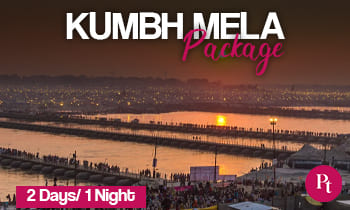
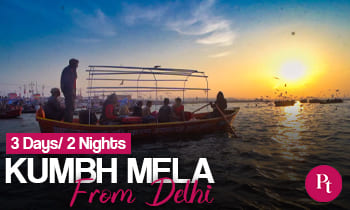
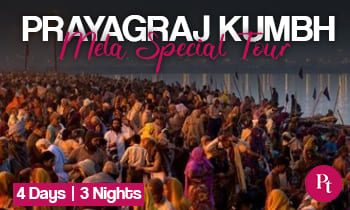
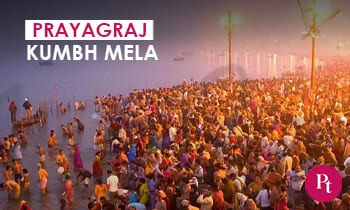
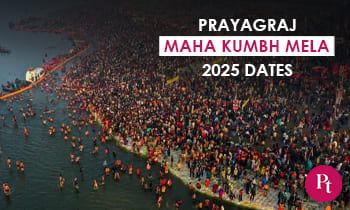
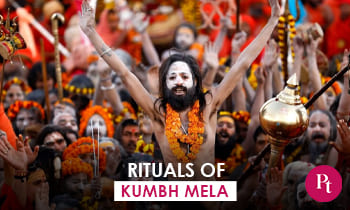

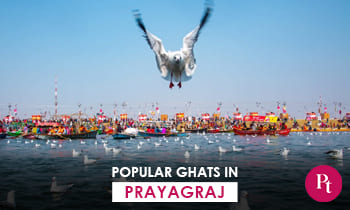
 Call
Call WhatsApp
WhatsApp Enquiry
Enquiry